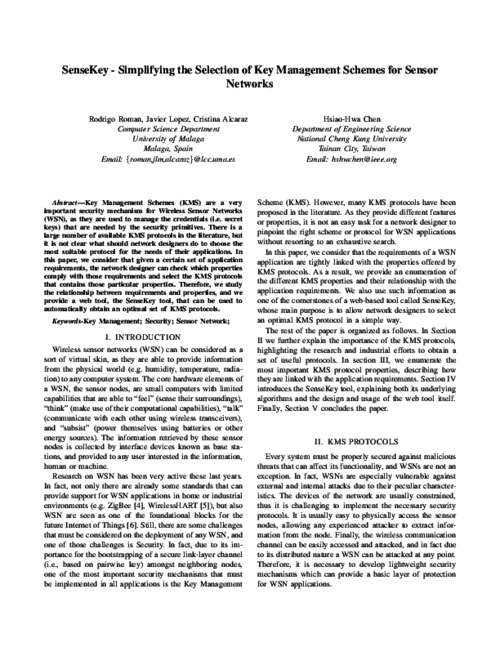 ] Title Type Year
] Title Type Year IEEE Computer, vol. 44, no. 9, IEEE, pp. 51 -58, Sept 2011. DOI
Abstract
This paper presents security of Internet of things. In the Internet of Things vision, every physical object has a virtual component that can produce and consume services Such extreme interconnection will bring unprecedented convenience and economy, but it will also require novel approaches to ensure its safe and ethical use. The Internet and its users are already under continual attack, and a growing economy-replete with business models that undermine the Internet’s ethical use-is fully focused on exploiting the current version’s foundational weaknesses.
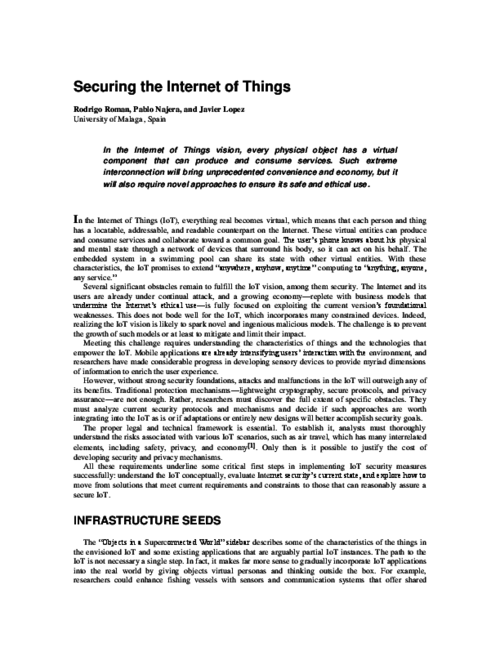
Computational Science and Its Applications (ICCSA’05), LNCS 3482, Springer, pp. 681-690, May, 2005. DOI
Abstract
Wireless Sensor Networks are extremely vulnerable against any kind of internal or external attacks, due to several factors such as resource-constrained nodes and lack of tamper-resistant packages. As a result, security must be an important factor to have in mind when designing the infrastructure and protocols of sensor networks. In this paper we survey the state-of-the-art security issues in sensor networks and highlight the open areas of research.security issues in sensor networks and highlight the open areas of research.
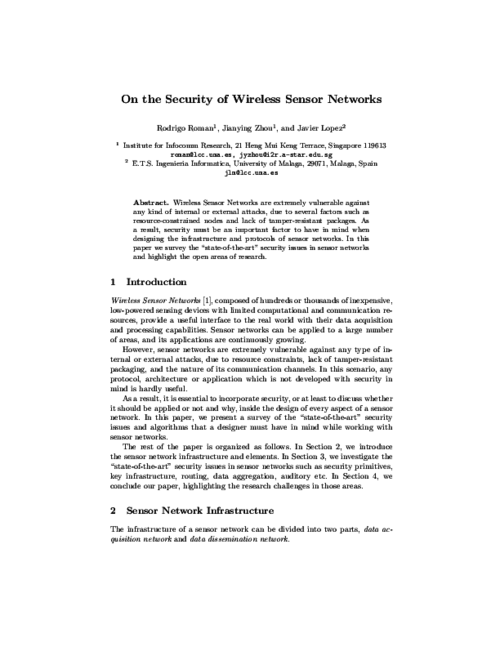
Mobile Networks and Applications, vol. 12, no. 4, Springer, pp. 231-244, August, 2007. DOI
Abstract
In a wireless sensor network environment, a sensor node is extremely constrained in terms of hardware due to factors such as maximizing lifetime and minimizing physical size and overall cost. Nevertheless, these nodes must be able to run cryptographic operations based on primitives such as hash functions, symmetric encryption and public key cryptography in order to allow the creation of secure services. Our objective in this paper is to survey how the existing research-based and commercial-based sensor nodes are suitable for this purpose, analyzing how the hardware can influence the provision of the primitives and how software implementations tackles the task of implementing instances of those primitives. As a result, it will be possible to evaluate the influence of provision of security in the protocols and applications/scenarios where sensors can be used.
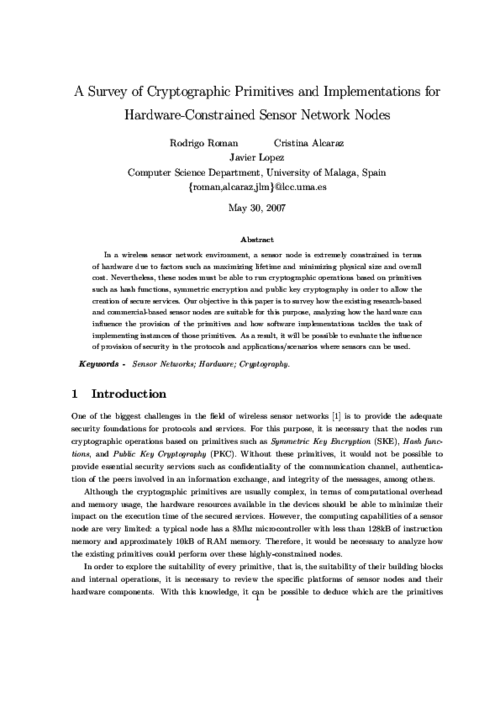
IEEE Communications Magazine, vol. 46, no. 4, IEEE, pp. 102-107, April, 2008. DOI
Abstract
A wireless sensor network should be able to operate for long periods of time with little or no external management. There is a requirement for this autonomy: the sensor nodes must be able to configure themselves in the presence of adverse situations. Therefore, the nodes should make use of situation awareness mechanisms to determine the existence of abnormal events in their surroundings. This work approaches the problem by considering the possible abnormal events as diseases, thus making it possible to diagnose them through their symptoms, namely, their side effects. Considering these awareness mechanisms as a foundation for high-level monitoring services, this article also shows how these mechanisms are included in the blueprint of an intrusion detection system.
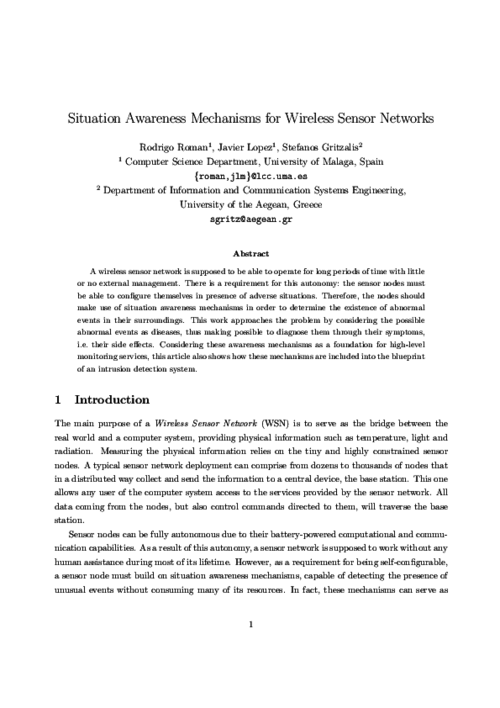
5th International Symposium on Security and Multimodality in Pervasive Environments (SMPE’11), IEEE, March, 2011. DOI
Abstract
Key Management Schemes (KMS) are a very important security mechanism for Wireless Sensor Networks (WSN), as they are used to manage the credentials (i.e. secret keys) that are needed by the security primitives. There is a large number of available KMS protocols in the literature, but it is not clear what should network designers do to choose the most suitable protocol for the needs of their applications. In this paper, we consider that given a certain set of application requirements, the network designer can check which properties comply with those requirements and select the KMS protocols that contains those particular properties. Therefore, we study the relationship between requirements and properties, and we provide a web tool, the SenseKey tool, that can be used to automatically obtain an optimal set of KMS protocols.
